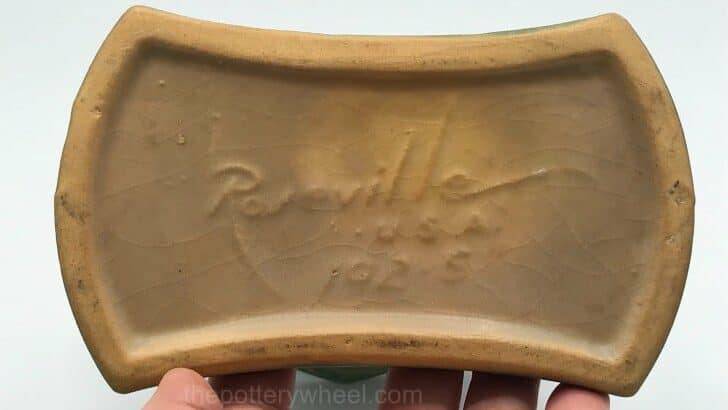Perhaps you are an antique enthusiast, or maybe you love pottery. Either way, if you think you have spotted or own some Roseville pottery, you may be wondering exactly how to identify Roseville pottery for certain.
Identifying antique pieces of pottery may be a painstaking process. Despite this, Roseville pottery has unique features that make it easy to set them apart. It is among the crafts highly sought after by collectors, especially because they were out of production for quite some time.
Fortunately, the brand has been revived in 2017, with production starting up again. You can read more about this revival here.
This article will discuss the features you can use to identify pieces of Roseville pottery. They include physical aspects such as pottery marks, color, design, and the type of glaze. Knowing what to look out for in Roseville pottery will also help you to determine the difference between authentic and counterfeit pieces.
Ways to Identify Roseville Pottery
Here are the 5 key ways to identify Roseville pottery…
Pottery Marks
Pottery marks are found in the unglazed area on the underside of a piece, appearing as a series of letters or numbers. These marks provide information about a piece, such as the time it was created and who made it. The information can also be used to determine its value.
Earlier on, Roseville would use triangular black papers to mark pottery lines like Futura and Imperial II. Later, the creators adopted new methods of marking their pieces, where they would use names instead. Names that have been used to mark Roseville pottery over the years include Rozane, Rv, Roseville Pottery Company, and Roseville, USA.
Starting mid-1930s, the Roseville Pottery Company added shape and size number marks on their pieces. This mark is usually a four or five-digit figure with two parts. The two parts are divided by a dash, where the first part represents the shape of the piece and the second part the size. An example of this five-digit figure is 728-10, where ‘728’ represents the shape, and ‘10’ is the size.
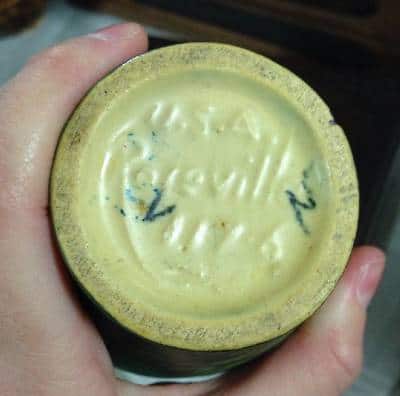
Type of Glaze
The Roseville company was well-known for its thorough glazing process. Glaze is a waterproof coating that is fused onto pottery through firing. Glazing serves to decorate, color, or waterproof a piece of pottery.
The glazing process used on Roseville pottery results in pieces with a soft, shiny sheen. This texture differentiates genuine pieces from fake ones. A fake piece of Roseville pottery will have a dull, flat glaze producing a texture that is not as smooth as that of a real Roseville pottery vessel.
The high standard of glazing used on Roseville pottery increases its value exponentially. Thus, these pieces tend to be relatively pricier than other forms of pottery.
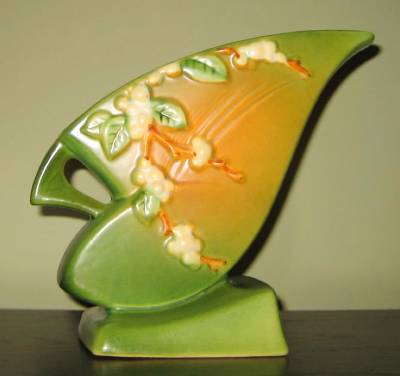
Roseville Decorations and Designs
The Roseville company decorated its pieces using a variety of designs. The designs range from scenic landscapes and floral sprays to symmetrical patterns that are very aesthetically pleasing. Therefore, Roseville pottery does stand out for being relatively more beautiful than many other types of pottery.
It is not easy for an untrained hand to replicate Roseville designs and decorations. So, you can only find a genuine piece from the company itself. Also, it will be possible to spot a counterfeit because it will not be as intricate as a real piece. Even so, you would require a keen eye to tell a fake piece from a genuine one.
As such, it becomes very easy to identify Roseville pottery if you know the common decorations and designs they feature.
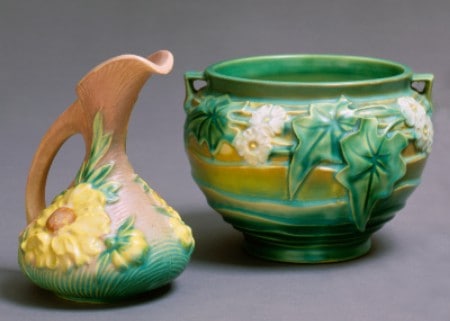
The Weight of the Piece
Roseville pottery is made with dense clay, which renders the pieces quite hefty. So, an authentic Roseville pottery piece should be quite substantial in weight. If you lift a piece and it feels too light, it is likely that it is not a real Roseville pottery artifact.
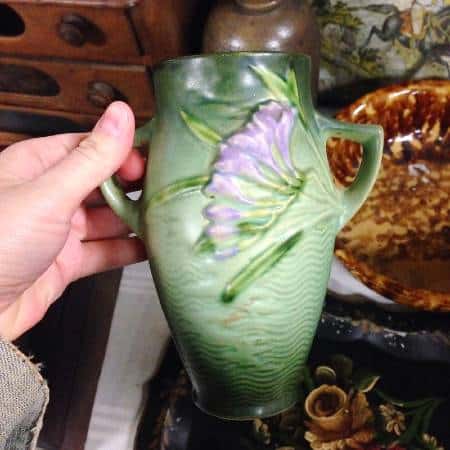
(CC BY-NC 2.0)
That being said, it may be hard to tell how much the piece in question should weigh without having anything to compare it to. In such a scenario, it would be advisable to carry out further research online. If the piece is common, it will be easy to find its information and, hence, determine how much it should weigh.
However, if it is a rare piece, it may be hard to find its information online as there may not be identical pieces. The good bit about this is that the rarer the piece, the more authentic it is. So, you can rely on this basis to establish that the piece is indeed a genuine Roseville artifact.
The Color of Roseville Pottery
Roseville pottery features subdued but glowing colors, which easily set it apart. Therefore, it becomes very easy to identify a piece of authentic Roseville pottery when compared to a counterfeit.
In 1933, the Artcraft patterns introduced by the Roseville company feature standard colors like mottled matte blue and shades of green. These colors are unique to the designs. Thus, the colors go a long way in distinguishing the pieces as Roseville pottery.
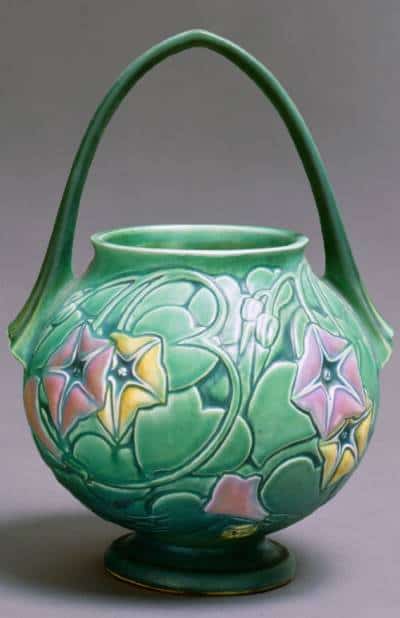
Spotting Counterfeit Roseville Pottery
It can be challenging for a new collector to differentiate between an authentic and counterfeit piece of Roseville pottery. Fortunately, there are aspects that can help you differentiate. Authentic pieces have identifying marks, colors, and textures.
One sure way to distinguish between a real and a counterfeit is to check the unglazed area at the bottom of a vessel. Use a clean piece of cloth to wipe the area thoroughly and observe. If it appears dusty and a bit worn, then that is an authentic piece. However, if the bottom area is clean, the piece is most definitely a fake.
As mentioned above in the article, the Roseville company would use marks to identify their pieces. While checking for marks is an effective way to distinguish between real and fake pottery, the company was not always consistent in marking their pottery. Therefore, checking for marks is not always a full-proof way to tell genuine Roseville pottery apart.
A reliable way to establish whether an unmarked piece is genuine is the glaze. A real Roseville piece has a shiny finish, while a fake one will be a bit rough in texture. Also, if you have been around real Roseville pottery long enough, you will be able to notice when the patterns on the pieces are not as intricate and unique as they ought to be.
Final Thoughts
Roseville pieces are popular among art collectors because of their rarity and intricacy in their designs. They are rare because they are no longer in production, which only upgrades their value. If you are an aspiring art collector or have taken an interest in Roseville pottery, it is expected that you would want to know how to identify it.
As highlighted in the article, there are several ways you can pick out a Roseville pottery piece. These aspects are often based on markings, type of glaze, color, and decorations that identify Roseville pottery. Even so, correctly identifying Roseville pottery requires skill, and it gets better with time and experience.

